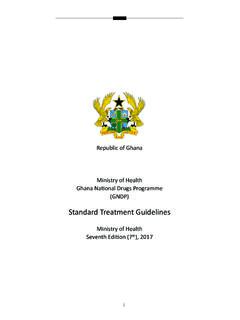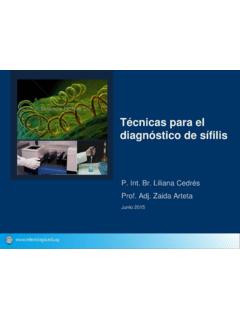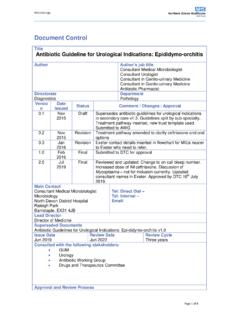Transcription of Management of Women with Bleeding Irregulatories While ...
1 Management of Women with Bleeding Irregularities While Using Contraception*If Bleeding persists, or if woman requests it, medical treatment can be usersFor unscheduled spotting or light Bleeding or for heavy or prolonged Bleeding : NSAIDs (5-7 days of treatment)LNG-IUD usersImplant usersFor unscheduled spotting or light Bleeding or heavy/prolonged Bleeding : NSAIDs (5-7 days of treatment) Hormonal treatment (if medically eligible) with COCs or estrogen (10-20 days of treatment)Injectable (DMPA) usersFor unscheduled spotting or light Bleeding : NSAIDs (5-7 days of treatment)For heavy or prolonged Bleeding : NSAIDs (5-7 days of treatment) Hormonal treatment (if medically eligible) with COCs or estrogen (10-20 days of treatment)CHC users (extended or continuous regimen)Hormone-free interval for 3-4 consecutive daysNot recommended during the first 21 days of extended or continuous CHC useNot recommended more than once per month because contraceptive effectiveness might be reducedIf Bleeding disorder persists or woman finds it unacceptableCounsel on alternative methods, offer another method, if desired* If clinically warranted, evaluate for underlying condition.
2 Treat the condition or refer for care. Heavy or prolonged Bleeding , either unscheduled or menstrual, is uncommon among LNG-IUD users and implant : CHC = combined hormonal contraceptive; COC = combined oral contraceptive; Cu-IUD = copper-containing intrauterine device; DMPA = depot medroxyprogesterone acetate; LNG-IUD = levonorgestrel-releasing intrauterine device; NSAIDs = nonsteroidal anti-inflammatory : For full recommendations and updates, see the Selected Practice Recommendations for Contraceptive Use webpage at of the IUD When a Cu-IUD or an LNG-IUD User is Found to Have Pelvic Inflammatory Disease Treat PID*. Counsel about condom use. IUD does not need to be wants to continue in 24 48 improvementContinue clinical improvement Continue antibiotics. Consider removal of IUD. Offer another contraceptive method. Offer emergency wants to discontinue IUD after beginning antibiotics.
3 Offer another contraceptive method. Offer emergency : Cu-IUD = copper-containing intrauterine device; IUD = intrauterine device; LNG-IUD = levonorgestrel-releasing intrauterine device; PID = pelvic inflammatory disease *Treat according to the CDC Sexually Transmitted Diseases Treatment Guidelines (available at ).Source: For full recommendations and updates, see the Selected Practice Recommendations for Contraceptive Use webpage at

















